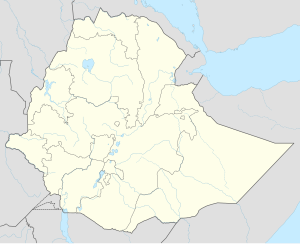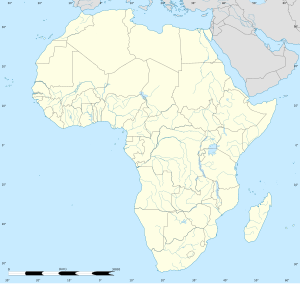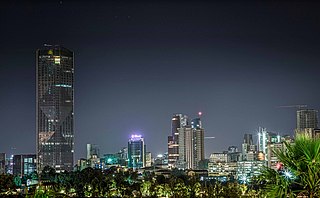
Addis Ababa is the capital and largest city of Ethiopia. In the 2007 census, the city's population was estimated to be 2,739,551 inhabitants. Addis Ababa is a highly developed and important cultural, artistic, financial and administrative center of Ethiopia. It is widely known as one of Africa's major capitals.

Oromia is a regional state in Ethiopia and the homeland of the Oromo people. Under Article 49 of Ethiopian Constitution, the capital of Oromia is Addis Ababa, also called Finfinne. The provision of the article maintains special interest of Oromia by utilizing social services and natural resources of Addis Ababa.
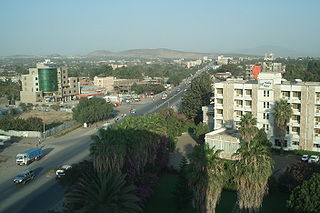
Adama, formerly Nazreth, is a one of the cities of Oromia Region of Ethiopia. Located in the East Shewa Zone 99 km (62 mi) southeast of the capital, Addis Ababa, the city sits between the base of an escarpment to the west, and the Great Rift Valley to the east.
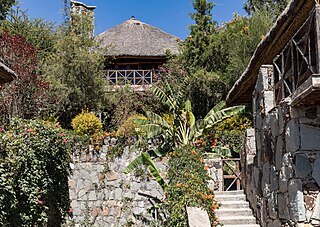
Bishoftu is a town in central Ethiopia. Located in the East Shewa Zone of the Oromia Region, it sits at an elevation of 1,920 metres (6,300 ft). It was formerly known as Debre Zeyit. However, since the late 1990s, it has been officially known by the Oromo name, Bishoftu from bishaanooftuu, which was its name until 1955. The town serves as the primary airbase of the Ethiopian Air Force.
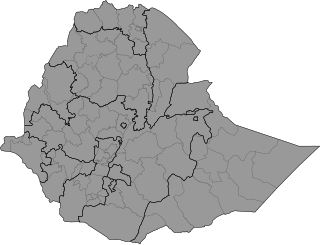
Ethiopia is administratively divided into four levels: regions, zones, woredas (districts) and kebele (wards). The country comprises 12 regions and two city administrations under these regions, plenty of zones, woredas and neighbourhood administration: kebeles. In addition to the Twelve federal states within the country, there are two federal-level city administrations in Addis Ababa and Dire Dawa.
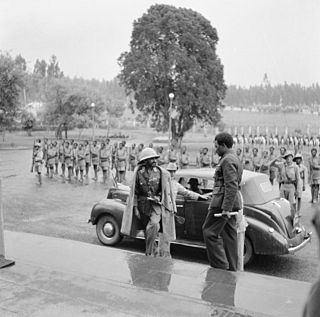
The history of Addis Ababa, capital of Ethiopia, formally begins with the founding of the city in the 19th century by Ethiopian Emperor Menelik II and his wife Empress Taytu Betul. In its first years the city was more like a military encampment than a town. The central focus was the emperor’s palace, which was surrounded by the dwellings of his troops and of his innumerable retainers. In the 1920s, Addis Ababa experienced a significant economic upturn, marked by a surge in the number of middle-class-owned buildings, including stone houses furnished with imported European furniture. The middle class also introduced newly manufactured automobiles and expanded banking institutions. Urbanization and modernization persisted during the Italian occupation, guided by a masterplan aimed at transforming Addis Ababa into a more "colonial" city, a trajectory that continued beyond the occupation. Subsequent master plans, formulated from the 1940s onward with the input of European consultants, focused on the development of monuments, civic structures, satellite cities, and the inner city.

The Oromia Special Zone Surrounding Finfinne is a zone in Oromia Region of Ethiopia that surrounds Addis Ababa. It was created in 2008 from parts of North Shewa Zone, East Shewa Zone, Southwest Shewa zone and West Shewa Zones. The zone was created to support the cooperation and development of the surrounding areas of Addis Ababa, and to control the urban sprawl of the city on the lands of Oromia. The administrative center of this zone is in Addis Ababa (Finfinne). The districts and town in this zone include Akaki, Bereh, Burayu, Dubra, Holeta Town, Koye Feche, Mulo, Sebeta Hawas, Sebeta Town, Sendafa Town, Sululta, Walmara, Laga Xafo Laga Dadhi, Galaan, Sebeta Hawas (Town) and Dukem.

Akaky Kaliti, also spelled Akaki Kality, is a district (sub-city) of Addis Ababa, Ethiopia. As of 2011 its population was of 195,273. Formerly, Akaky Kaliti was known as Woreda 26.

The 2014–2016 Oromo protests were a series of protests and resistance first sparked on 25 April 2014. The initial actions were taken in opposition to the Addis Ababa Master Plan, and resumed on 12 November 2015 by university students and farmers in the town of Ginchi, located 80 km southwest of Addis Ababa, encircled by the Oromia region. The plan was to expand the capital into the Oromia special zone, leading to fears that native Oromo farmers would lose their land and be displaced. The plan was later dropped but protests continued, highlighting issues such as marginalization and human rights. Mulatu Gemechu, deputy chairman of the opposition Oromo Federalist Congress, expressed to Reuters: "so far, we have compiled a list of 33 protesters killed by armed security forces that included police and soldiers but I am very sure the list will grow". Protesters demanded social and political reforms, including an end to human rights abuses like government killings of civilians, mass arrests, government land seizures, and political marginalization of opposition groups. The government responded by restricting access to the internet and attacking as well as arresting protesters.

A state of emergency was declared on 9 October 2016 by Ethiopian Prime Minister Hailemariam Desalegn, after de facto taking effect the previous day. The state of emergency authorized the military to enforce security nationwide. It imposed restrictions on freedom of speech and access to information. The duration was initially announced for six months. The Constitution of Ethiopia provides for a six-month state of emergency under certain conditions. The declaration of the state of emergency followed massive protests by the Oromo and Amhara ethnic groups against the government, which was dominated by the Tigray People's Liberation Front, largely consisting of Tigrayans, a smaller ethnic group. The 2016 state of emergency was the first in about 25 years in Ethiopia. In March 2017, Ethiopia's parliament voted to extend the state of emergency for another four months.
The Burayu massacre was a series of communal clashes which occurred in the vicinity of the Ethiopian town of Burayu, in the Oromia Region, on 14–16 September 2018. Individuals from the Oromo and Dorze ethnicities fought in and around Burayu, a town in Oromia Region which is located near the northwest boundary of Addis Ababa, the federal capital. Different sources cite number of civilians killed both from Oromo and non-Oromo ethnicity.

A October 2019 Ethiopian clashes was a civil unrest that broke out in Addis Ababa, on 23 October 2019 and swiftly spread to entire Oromia Region after activist and Director of Oromia Media Network, Jawar Mohammed reported on his Facebook page around midnight, on Tuesday. In his post, Jawar has said that his house was surrounded by police officers and that they tried to withdraw his security guards from their posts. His VIP security detail was assigned to him by the government once he arrived from the US. According to official reports, 86 people were killed, 76 were killed by Communal violence, while 10 were security forces of Ethiopia.

Hachalu Hundessa was an Ethiopian singer, songwriter, and civil rights activist. Hachalu played a significant role in the 2014–2016 Oromo protests that led to Abiy Ahmed taking charge of the Oromo Democratic Party and Ethiopian People's Revolutionary Democratic Front, and subsequently becoming prime minister of Ethiopia in 2018.

The Hachalu Hundessa riots were a series of civil unrest that occurred in the Oromia Region of Ethiopia, more specifically in the hot spot of Addis Ababa, Shashamene and Ambo following the killing of the Oromo musician Hachalu Hundessa on 29 June 2020. The riots lead to the deaths of at least 239 people according to initial police reports. Peaceful protests against Hachalu's killing have been held by Oromos abroad as well. The Ethiopian Human Rights Commission (EHRC) found in its 1 January 2021 full report that part of the killings were a crime against humanity, with deliberate, widespread systematic killing of civilians by organised groups. The EHRC counted 123 deaths, 76 of which it attributed to security forces.
The 2014 Addis Ababa Master Plan was a controversial plan to expand the boundaries of Ethiopian capital, Addis Ababa, by 1.1 million hectares into the Oromia Special Zone in April 2014. The plan was met with protests, particularly in the Oromia Region, with critics saying it would violate the 1995 Constitution.

Since the 1990s, the Amhara people of Ethiopia have been subject to ethnic violence, including massacres by Tigrayan, Oromo and Gumuz ethnic groups among others, which some have characterized as a genocide. Large-scale killings and grave human rights violations followed the implementation of the ethnic-federalist system in the country. In most of the cases, the mass murders were silent with perpetrators from various ethno-militant groups—from TPLF/TDF, OLF–OLA, and Gumuz armed groups.

The relations between Oromia and Addis Ababa has been great controversy as the subject sparked historical revisionism in the linkage of history of Addis Ababa. The area in the present day Addis Ababa called Finfinne where various Oromo pastoralists inhabited the region, and the emergence of Abyssinian expansionism under Emperor Menelik II which renamed the area as Addis Ababa in 1886. Throughout the 20th century, Addis Ababa was governed as the capital city of the Ethiopia under urban influence.
Events in the year 2023 in Ethiopia.
Many buildings have been demolished by the government of Ethiopia under Prime Minister Abiy Ahmed since early 2019, with 12,000 homes planned to be demolished for the purpose of rebuilding urban sprawl. The project was targeted toward Addis Ababa and Oromia, in the towns of Sebeta, Buraryu, Lagatafo Lagadadi, Sululta, Ermojo, and Gelan. Residents have criticized the government demolition, claiming they paid taxes to the government properties, and the government is illegally taking undue advantage to confiscate for the Oromia government.

Sheger City is a proposed model of urban development established on 22 October 2022 that centers around the city Addis Ababa to provide influence and economic benefit for other satellite cities. The administration contains 12 sub-cities, 36 districts and 40 rural kebeles with its seat located in Saris area in Addis Ababa.
